|
|
|
|
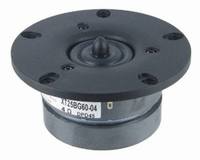
|
Vifa XT25BG06-04
Ring radiator Tweeter * 4Ω * 92dB * 2500Hz-25kHz * 60W
The tweeter XT25BG06-04 is a patented design called ring radiator and it has an extended flat response.
It is performing its best over 3kHz when a system has higher SPL capability
- this system definitely has a high max SPL without any compromises.
|
|
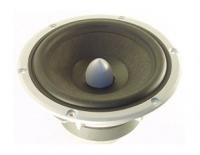
|
Peerless HDS Exclusive 6˝"
6˝" Nomex cone * 8Ω * 88dB * Fs=42Hz * 60W
The mid-range Peerless 6,5” HDS Exclusive presents a very crystal clear sound. The HDS has very low distortion,
smooth response with a mild brakeup and near flat impedance, which is a result of a great motor design utilizing copper.
The mid driver has the “lowest” max SPL capability and
we decided to cross it a bit higher than normal for a driver of this size to protect from too high power and excursion.
|
|

|
Peerless XXLS 12"
12" Aluminium cone * 4Ω * 91dB * Fs=19Hz * 400W
The bass is a really nice woofer – often used in stand alone subwoofers in the range from 20Hz to around 100Hz. In the XT612 we utilize
its flat response for a higher crossover point 300Hz in a ported volume of 100 litres – the port is tuned to 25Hz, which gives the loudspeaker
capability of reproduce the atmosphere of the recording room - when the sound engineer has done a proper job.
|
|
|

Close microphone measurement of the tweeter in the XT612 box

Close microphone measurement of the mid-range in the XT612 box

Close microphone measurement of the bass and port - actually measured very close to the bottom of the XT612 box.
It is not a perfect measurement as the high part of the frequency range of the bass is not correctly represented,
but it show how smooth the response is in the final frequency area and the room is not affecting the measurement.
XT612 techincal drawing in PDF format:
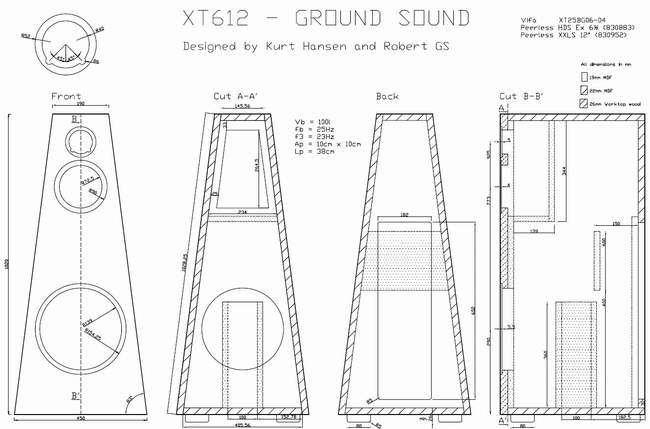
The shape and stiffening of the box gives less square areas and the different materials gives different resonances within the box.
The construction of the front with both 19mm MDF and solid kitchen worktop wood gives the drivers a rigid base for performing their best.
The rest of the box is constructed in 22mm MDF. You often find constructions that includes the possibility of sand fill to give the box
more weight = better ratio between moving mass and non moving mass. We have chosen to use the MDF that we already have left over for
the port which adds weight to the construction and forms a solid barrier inside the bass volume. Here you normally see a plastic tube
which doesn’t weigh much and aren’t that solid. The Coolback also adds weight and is yet another material. The total weight of each box
is actually 60kg.
There are other benefits of putting the amplifiers inside the loudspeaker. Short speaker cables for one and then there is the visual aspect.
You do not have a stack of amplifiers to place somewhere because they are integrated in the box. This leads to a higher WAF (Wife
Acceptance Factor) and you might even be allowed to have a bigger loudspeaker like the XT612 exactly because of this. Sorry for assuming that only men are
building loudspeakers and I could provoke a bit more by saying: “The size of the loudspeaker shows how much you actually have to say at home!”
- again assuming that it’s a mans thing the interest of music and sound.
Everything really adds up when active amplification is used – giving total control and lots of power directly into the drivers AND still
having sonic excellence, headroom and dynamic range. A lot of loudspeaker constructions simply lack the ability to perform a well recorded
piece of music because they are not full-range and / or has insufficient sound pressure levels. The performance of the bass is often overseen,
but bass is often the key to success. The right tuning in the room by controlling the room modes also gives a controlled bass response.
If you have an uncontrolled room mode you will have a frequency in the bass that will “stay” in the room for too long - for example giving
a bass guitar an uneven nature when the string / node is hit. The tuning of the bass affect the tonal balance of the loudspeaker and often
a speaker can sound “hard” because of lack of bass level or width. You often see that people choose less bass response or rather “no” response
to avoid the “singing” room modes which leads to a “hard” sound without atmosphere reproduction. You could move the speaker outside and experience
what a cheap trick it is – no bass gain from the room and here you really lack bass response and the music will be dull and it will lack the abillity
to be alive.
Building the boxes:
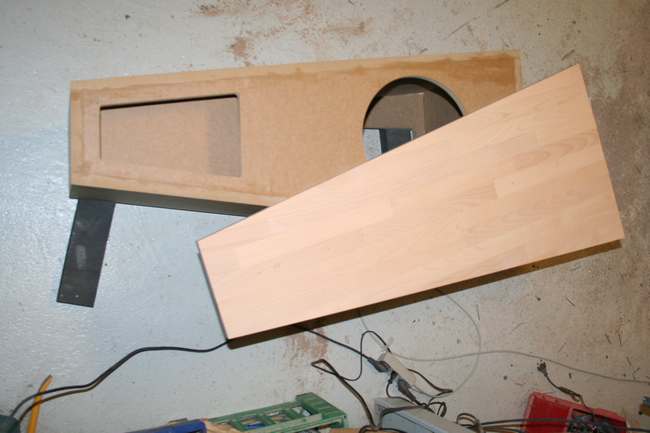
The "main" box has been assembled and the front is ready for CNC milling
- all done at Kurt's work shop, thanks!

Next step is to prepare the box for paint
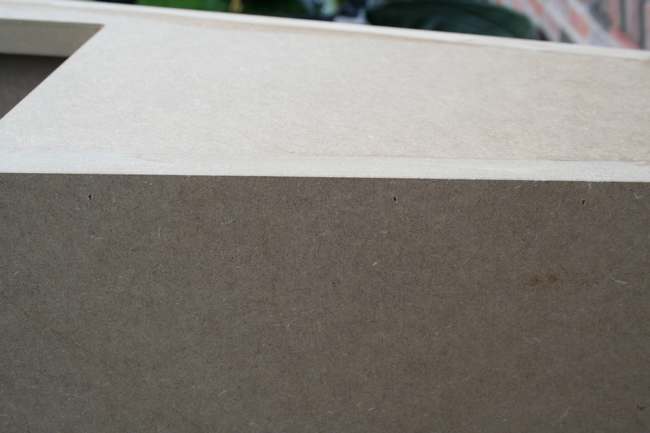
A close up of the nails - not much to fill
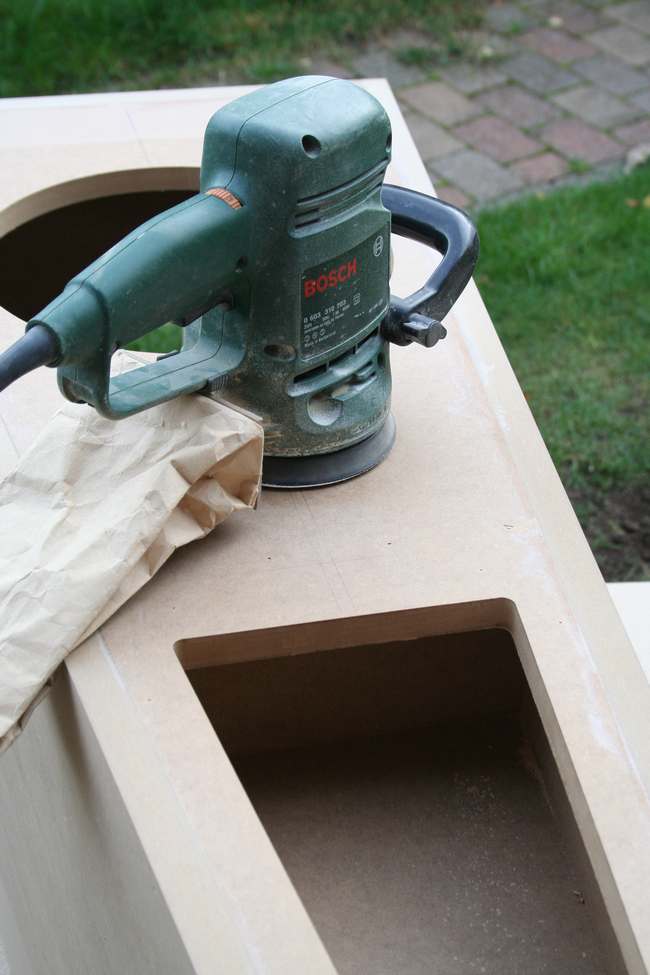
Sanding with a machine also eases the job to be done

After the CNC milling the drivers fits perfectly

One front has been "copied" from one of the boxes and edges has been rounded
The edges of both the box and front between them has have a 45° cut for nicer looks
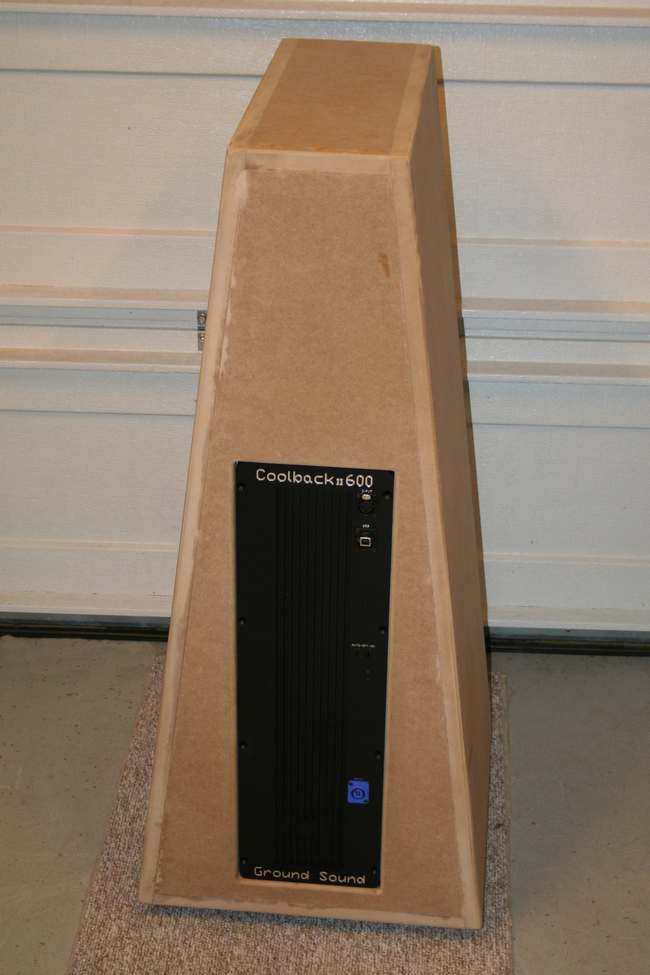
Four narrow pieces of 18mm plywood forms the flange of which the Coolback will be attached.
The Coolback fits perfectly in the box and the boxes are ready for paint
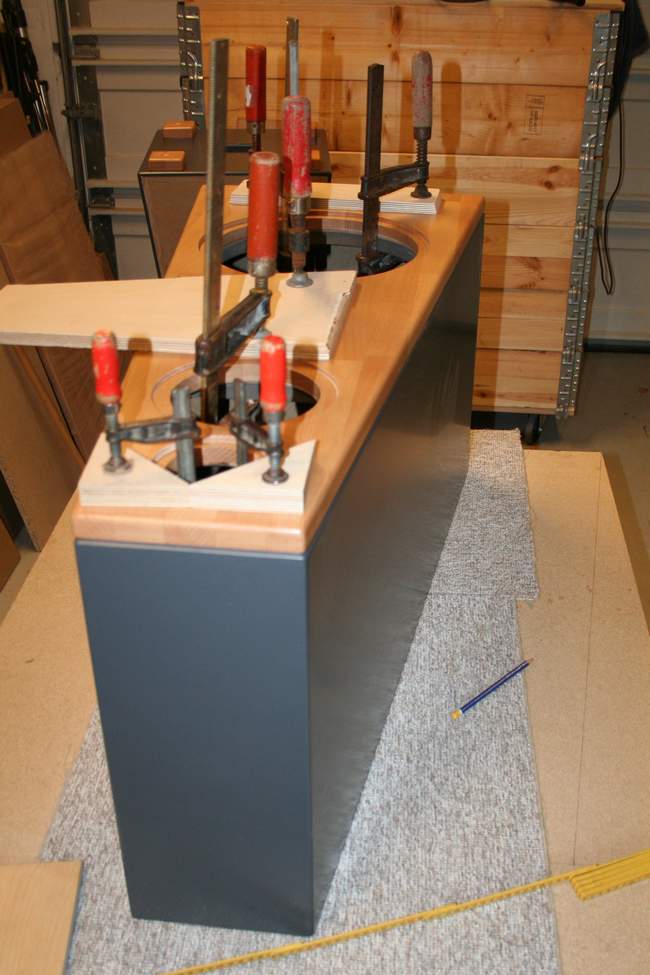
The front is glued to the box and in the background you can see the feet also has been mounted
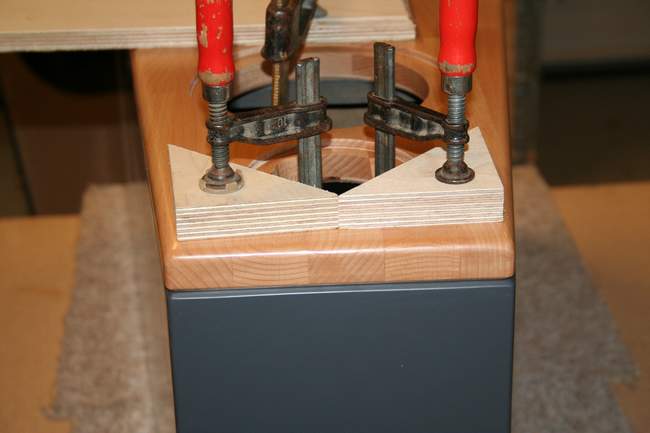
Glued under presure and here the 45° cuts gives a destinct look
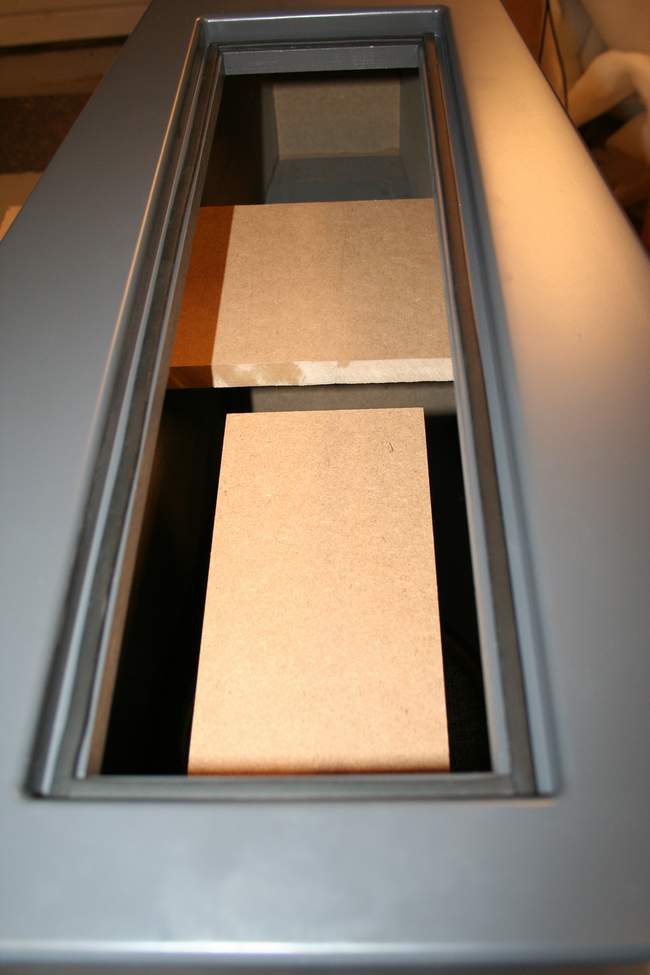
Rubber list has been mounted for sealing between the Coolback and box flange

"Christmas" white damping material has been fitted - make sure that it does not get in touch with the electronics
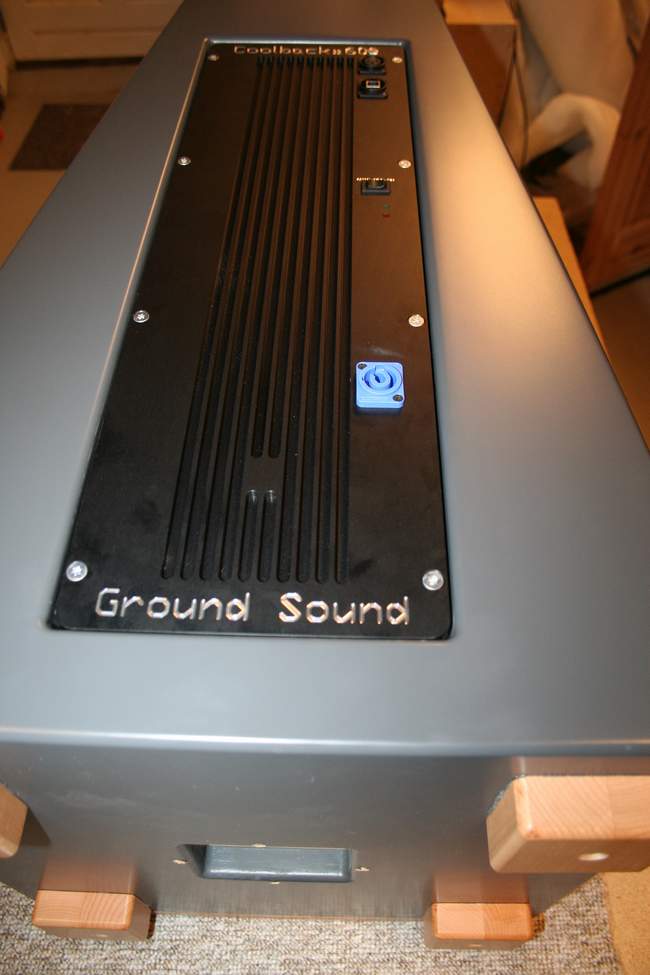
Notice: In order to have the right tuning of the port - the height of feet, spikes or damping feet
(like -
SD Sonic Design) has to be at least 25mm.
The Coolback is mounted before the drivers, because it is possible to have the box lying on the back
when the drivers will be mounted.
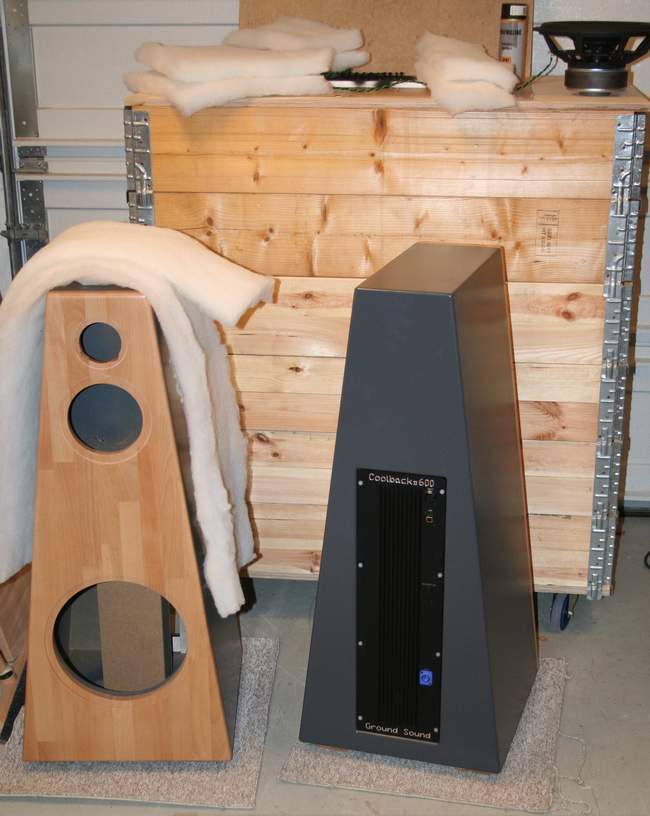
One box is ready - and remember...NO passive filter has been mounted...we only have to Program it...
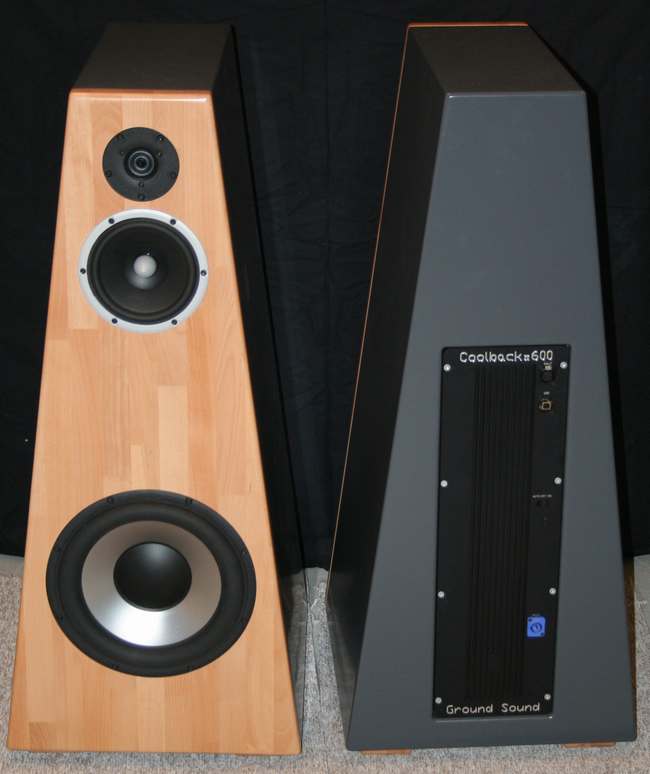
Final result of all the work

The tweeter measured with the new XOverWizard II Advanced at 1m in the box

The mid-range driver measured from the some point as the tweeter

The bass measured also from the same point as the two other drivers also in the box
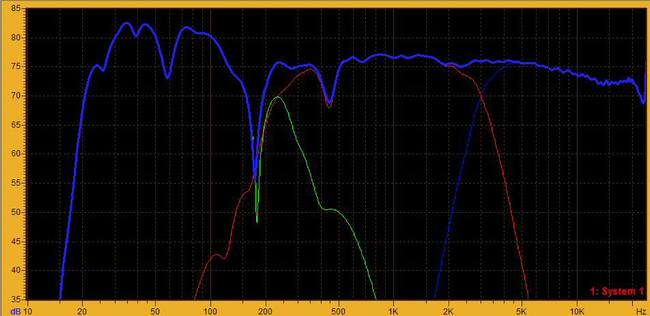
Here you see the final result setup in the XOverWizard II Advanced. I have only used the optimiser
option above 500Hz because of the reflections from the floor, walls and ceiling at the specific measuring point.
The bass itself is rather flat as you saw earlier. That means that the bass have only had a slight damping of the
particular room modes two PEQ (Fair in Gelsenkirchen: f=26Hz, Q=10, Gain= -4dB; f=39Hz, Q=9, Gain= -4dB). Further I have optimized the higher
frequencies to have a little slope from 1kHz toward 20kHz and in the very sensitive area around 2kHz I have damped with
a PEQ f=2,2kHz, Q= 2, Gain= -1,5dB. For personal taste I have also added a little boost in the bass region with a 1.order Low
Shelving Filter at 80Hz and a gain of +3dB.
The crossover points are 250Hz Linkwitz-Riley 24dB/octave and 3kHz Linkwitz-Riley 48dB/octave.
For protection of the bass a HighPass filter have been set at 20Hz type 8.order Butterworth.
Here is the same setup of the DCN23 in XOverWizard version: XT612_messe.xow
You might think it should be flat when the possibility are within reach of the DCN23 and you could do that - just download the setup
and go ahead. Here is the "old" software if you haven't already got it: XOverWizard .
I decided to set it up as mentioned above and in many High-End systems some of the same choices have been made.
You can make the response from the loudspeaker very smooth
...or you can add your personal taste
The decision is totally yours !
|
|
|
 active@groundsound.com
active@groundsound.com
 active@groundsound.com
active@groundsound.com